In concrete construction, selecting the right superplasticizer is essential to achieving optimal performance and durability. Among the top contenders are Polycarboxylate Superplasticizers (PCE) and Naphthalene Superplasticizers (NS). Each brings unique benefits to concrete mixes, affecting workability, strength, and setting time. In this guide, we’ll delve into the key differences between these superplasticizers, exploring their advantages, limitations, and suitability for various projects.
Understanding Superplasticizers: Polycarboxylate vs. Naphthalene

1. What Are Superplasticizers and Why Are They Essential in Concrete?
Superplasticizers enhance concrete workability and reduce water ratios, essential for achieving desired fluidity and strength in modern construction projects.
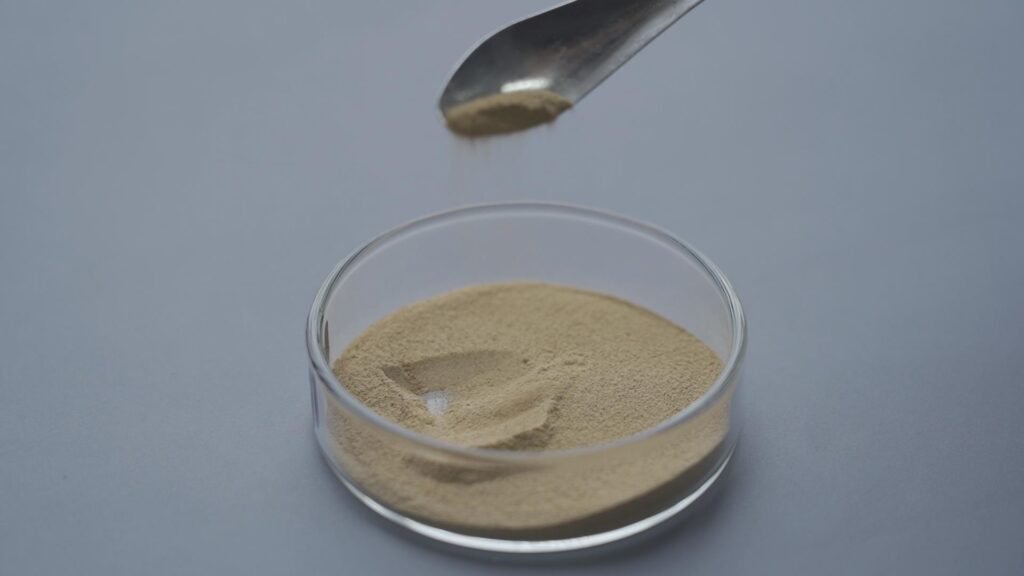
2. Naphthalene Superplasticizers: A Cost-effective Traditional Choice
Naphthalene Superplasticizers have long been favored for their cost-effective ability to enhance concrete strength by reducing the water-cement ratio. Despite being budget-friendly, they have shorter slump retention times, limiting their use in some modern applications.
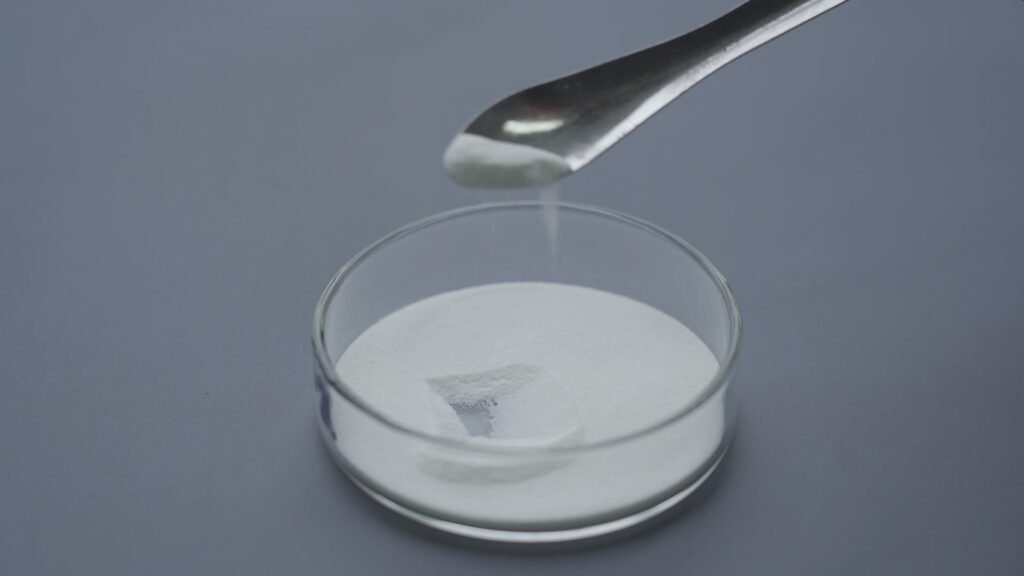
3. Polycarboxylate Superplasticizers: Advanced Technology for Modern Needs
Polycarboxylate Superplasticizers represent advanced technology, offering significant enhancements in workability and strength. They excel in high-performance applications, providing longer slump retention and superior dispersion of cement particles.
Visual and Chemical Differences Between Superplasticizers
One of the most noticeable differences between these two types of superplasticizers is their appearance. Naphthalene superplasticizer typically has a brownish-yellow hue with a slightly pungent odor. This appearance can influence the final color of the concrete, especially when used in large quantities. On the other hand, PCE is a white to pale yellow, odorless powder. Its purer appearance makes it the preferred choice when the aesthetic outcome of the project is crucial.
For projects with strict color specifications, such as architectural concrete where visual appeal is paramount, PCE allows for greater versatility. Its neutral color helps maintain the desired aesthetic without affecting the final appearance of the concrete.
Performance Comparison: Water Reduction and Durability
When comparing the performance of Polycarboxylate Superplasticizers (PCE) and Naphthalene Superplasticizers (NS), PCEs offer clear advantages that make them the superior choice for many concrete applications. One of the most significant benefits of PCEs is their high water reduction rate, which ranges from 30-35%, compared to the 20-25% achieved with NS. This higher water reduction capability allows for less water in the mix while maintaining desired workability, resulting in stronger and more durable concrete.
Moreover, PCEs provide excellent dispersion capabilities, ensuring an even distribution of cement particles throughout the concrete mix. This enhances flowability and workability, which are crucial in preventing cracking by promoting uniform curing and hydration. Such properties are particularly beneficial in complex or intricate designs requiring high fluidity.
PCEs also offer extended initial setting times, providing greater flexibility for construction, especially in large-scale projects where prolonged working time is necessary. This is an important advantage in high-strength and ultra-high-strength applications, such as C50 concrete, where the need for high-performance concrete that withstands substantial loads and stresses is critical. In contrast, naphthalene superplasticizers, while cost-effective, do not match PCEs in water reduction or extended workability, making PCEs the preferred choice for projects with demanding performance requirements.
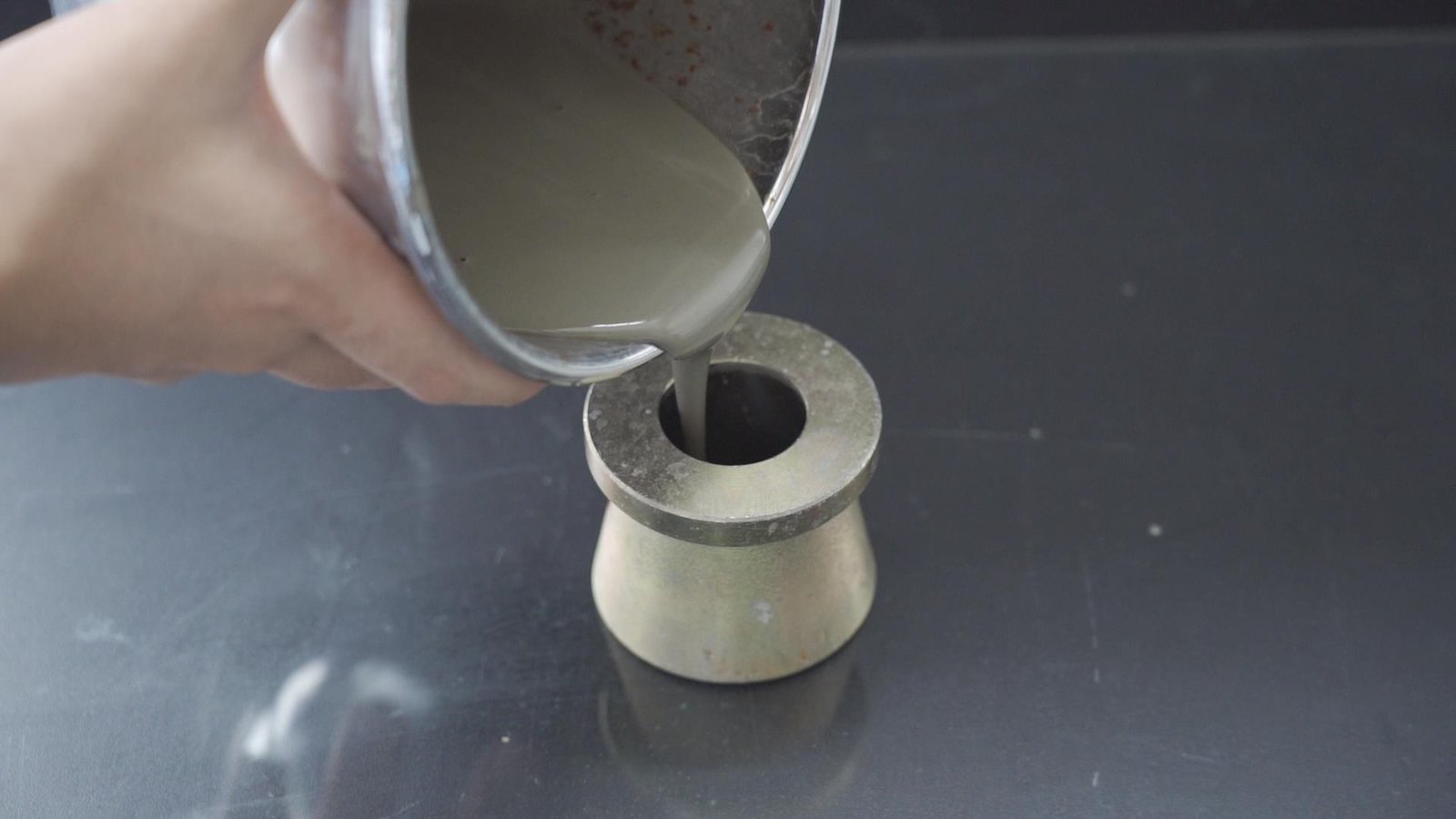
Superplasticizer Added Concrete Fluidity Comparison
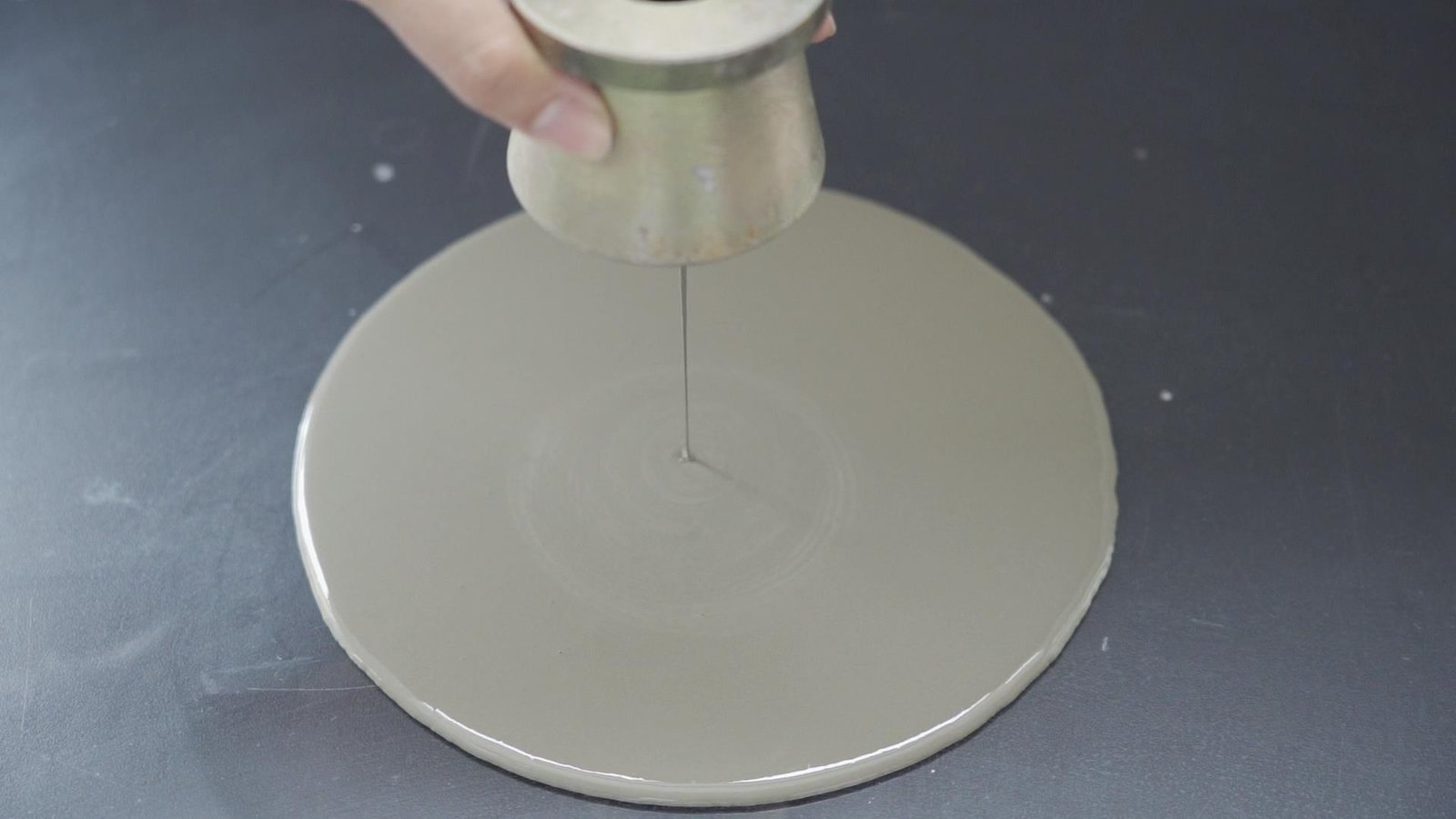
Polycarboxylate Superplasticizer Added

Naphthalene Superplasticizer Added
Eco-friendly Construction: Sustainable Superplasticizer Solutions
PCE are synthesized using methods that avoid the use of formaldehyde, a common industrial chemical with potential health and environmental hazards. Additionally, PCE production does not generate wastewater, preventing pollution at the source. These factors make PCE a pollution-free additive, aligning well with sustainable building practices. Their function is based on the steric repulsion mechanism, where polymer chains adsorb onto cement particles, leading to effective dispersion and lower water demand. This improved efficiency further supports eco-friendly construction by reducing cement usage, thus lowering the carbon footprint associated with cement production.
In contrast, the production of naphthalene superplasticizers involves chemical compounds that can have a higher environmental impact. The synthesis processes for NS generally include sulfonation and condensation reactions that might produce more chemical waste. NS works through electrostatic repulsion, dispersing cement particles to improve workability and reduce water content. However, its lifecycle and the derivation from naphthalene-based compounds raise concerns about sustainability and pollution, particularly when considering the broader environmental objectives of green construction standards.
By choosing PCE, construction projects can better align with environmental goals and green building certifications. The pollution-free nature of PCE makes them a preferable choice for builders and architects who prioritize sustainability. As the industry moves towards more eco-conscious methods, PCE provide a viable pathway to achieving greener construction outcomes.
Balancing Costs: Maximizing Efficiency and Savings
When evaluating the cost efficiency of Polycarboxylate Superplasticizers (PCE) versus Naphthalene Superplasticizers (NS), several factors come into play that can influence project budgets. PCE stand out for their cost-effective advantages due to their higher performance efficiency, requiring lower dosages to achieve desired concrete properties. This not only reduces the material costs but also enhances the concrete’s strength and durability, leading to long-lasting structures with fewer maintenance needs and potential repairs over time.
PCE’ ability to deliver these enhanced properties with less material contributes to significant overall construction cost reductions. In contrast, while NS may initially seem more budget-friendly due to their lower purchase price, they typically require higher dosages to achieve similar performance levels. This can lead to increased material usage and potentially higher costs in the long term, especially when factoring in the longevity and maintenance of structures.
For projects where budget constraints are paramount, the high cost-performance ratio of PCE offers a compelling argument. The initial investment in PCE is often outweighed by the savings gained through reduced material usage, improved durability, and minimized maintenance expenses, making them an attractive option for efficient, long-term project planning.
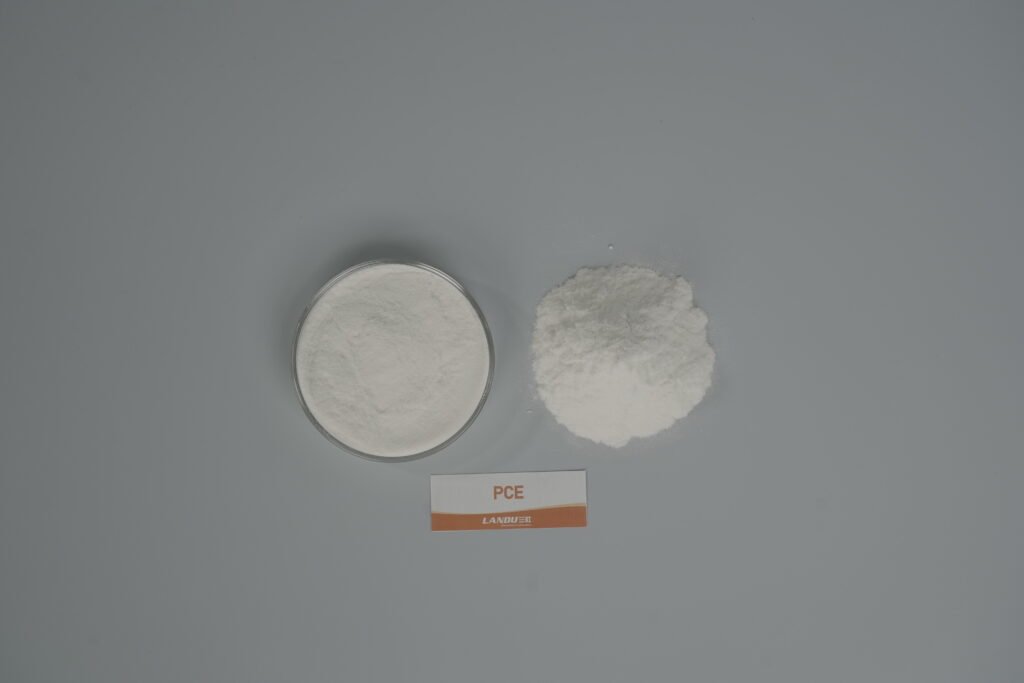
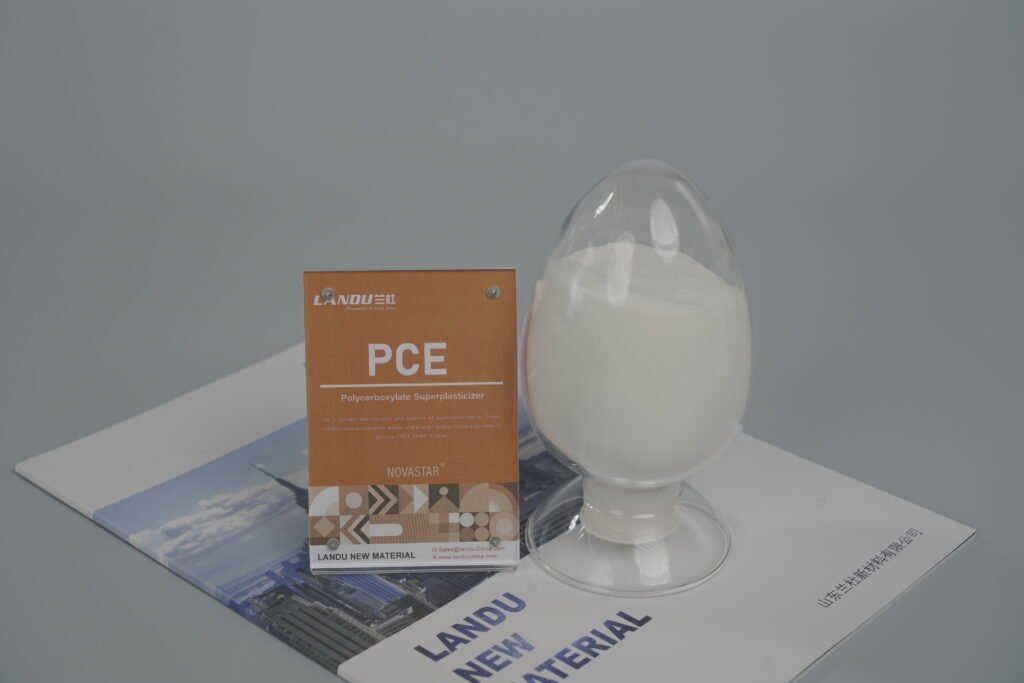
Landu Idea: Making the Right Superplasticizer Choice for Your Project
When deciding between polycarboxylate and naphthalene superplasticizers, it’s essential to consider the specific requirements and goals of your project. While both options offer distinct benefits, PCE stands out for its superior water-reducing capabilities, environmental friendliness, and cost efficiency. Its ability to enhance concrete performance while minimizing environmental impact makes it a preferred choice for modern construction needs.
However, naphthalene superplasticizer still has its place, particularly in applications where budget constraints are more pressing and color or environmental considerations are less critical. Understanding the unique advantages and limitations of each product will help you make an informed decision that aligns with your project’s objectives.
For further guidance on choosing the right superplasticizer for your construction needs or to learn more about our product offerings, feel free to contact us. Subscribe to our updates to stay informed about the latest advancements in concrete technology and sustainable building practices.
Landu is committed to supporting your projects with innovative, high-quality solutions tailored to meet the demands of the construction industry. Let us help you build the future with confidence and excellence.

